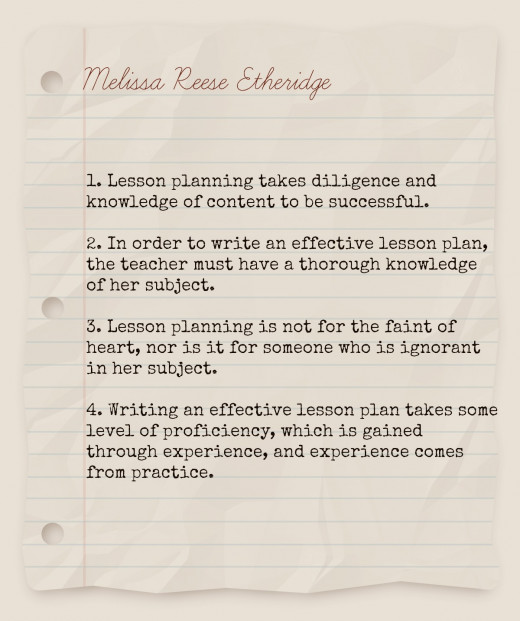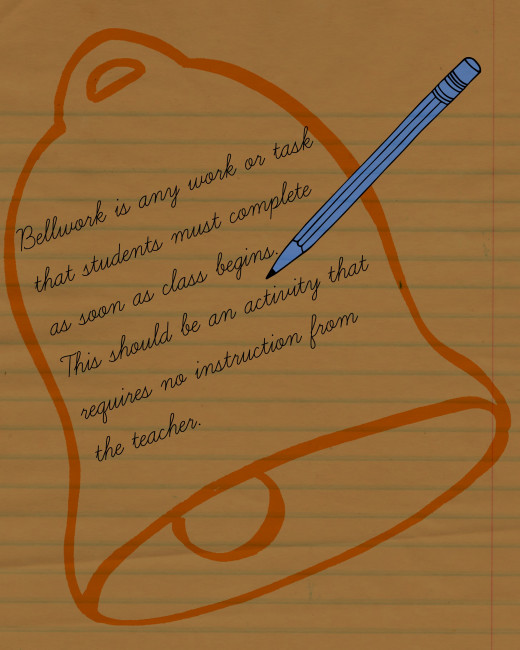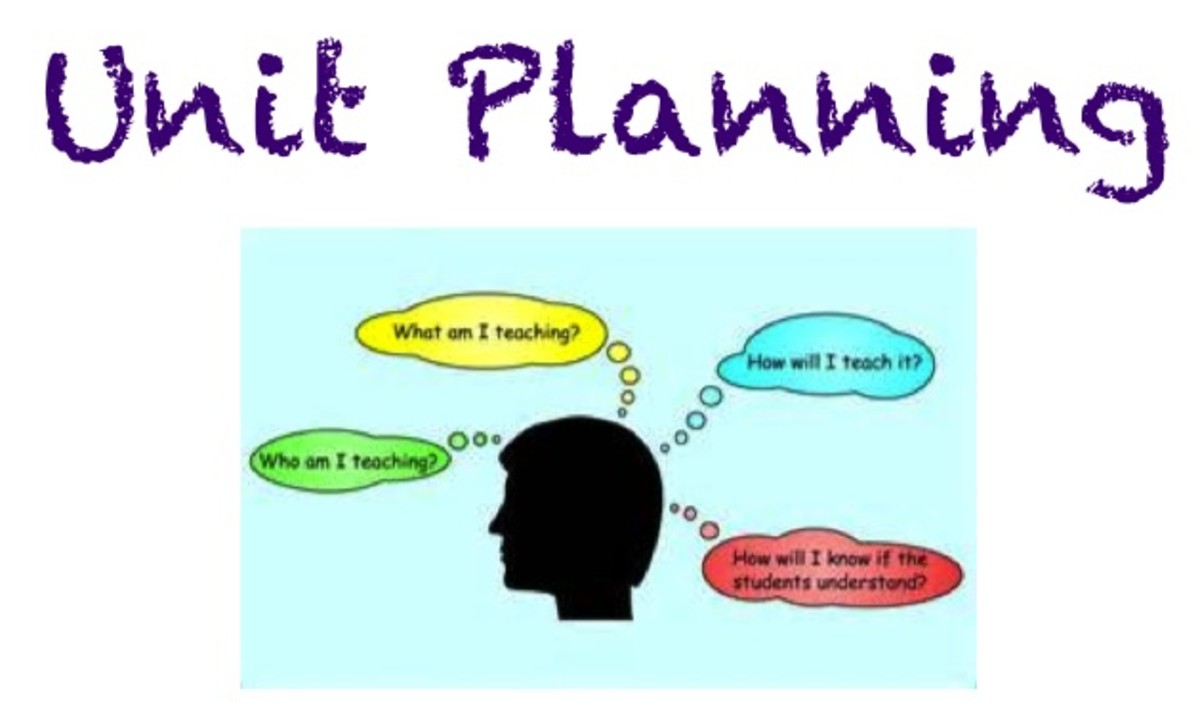How to Write a Level 5 Lesson Plan

In this day of high stakes accountability where a teacher's lesson plan makes up forty percent of her classroom observation score, it is imperative that teachers in all grades are able to construct a basic lesson plan. With nearly thirty years of public school teaching experience, I have seen lesson planning trends come and go and am able to write a flawless lesson plan that earns a five every time. I do not add fluff or bells or whistles. What I do include are the basic fundamentals of lesson planning that incorporates important information that will help you implement your lesson and meet the expectations of your administrative evaluators.
Ultimately, leadership is not about glorious crowning acts. It's about keeping your team focused on a goal and motivated to do their best to achieve it, especially when the stakes are high and the consequences really matter. It is about laying the groundwork for others' success, and then standing back and letting them shine.
— Chris HadfieldIt really doesn't matter if you turn in a digital or a hard copy plan; the basic format is the same. The teacher needs to use backwards planning in order to effectively gauge student learning and plan learning activities that will show a level of mastery. You, as the teacher, must label the learning. What do you want to see the students do at the end of the lesson? For example, as a writing teacher, I want my students to write four sentences, each with a different sentence structure. So, that becomes my lesson objective. The learner will write four structurally different sentences. Everything in my lesson will lead to this learning.

The next step in lesson planning is to decide how you're going to introduce your lesson. Most teachers blend their lesson introduction with their bell ringer activity. In my lesson on how to write with a variety of sentence structures, I would have four different sentences on the board or overhead projector, each with a different structure:

The students, during their bell work time, will read the four sentences and analyse how they are similar and different. They will write their responses in their writer notebooks. The introduction should not last longer than ten minutes. You don't need to go over your bell work during this time as you're going to teach the lesson, and the students can go over the bell work as part of the lesson.
What is Bellwork?

Now comes the direct instruction. This is when you get to shine. Direct instruction is your opportunity to be the sage on the stage. In direct instruction, you will give content knowledge and/or teach a skill. My sample lesson includes both content knowledge and writing skills and strategies. I will first teach the students about the four sentence structures (simple, compound, complex, and compound-complex) and give examples of each. As a note taking strategy, students will fold a regular sheet of paper into fourths and label each with a sentence structure. They will write the parts of that sentence and examples. Remember, this is all part of direct instruction.

The next part of the lesson involves the students answering questions or practicing skills. This part of the lesson plan is called practice. For my lesson on writing structurally different sentences, the students will complete two different types of practice. First, the students will read a collection of sentences and identify the sentence structure. The identification of sentence structures can be in the form of a worksheet or textbook pages. I could even have the sentences on a presentation slideshow. The second part of the practice involves writing sentences with different structures. In small groups of no more than three, students will write a group of structurally different sentences. This is all in the part of the lesson called practice.

The next part of a lesson plan is called the reinforcement. In this part of the plan, the teacher will go over the bell work and practice sentences. This is formative assessment. You are determining how much of the material that the students have mastered and what type of refinement or reteaching, if any, needs to be done. For the sample lesson, the students will present their sentences to the class, identifying their structure. The students will analyze the sentences, identifying the structure.
The last part of the lesson is closure. The closure contains a quick review or restatement of the learning (objective) and a summary of the instruction. For the sample lesson, I would go over the bell work sentences as a summary review. The students would individually write four sentences on a piece of paper, identifying the structure of each. This could be used as a formative or summative assessment depending on how you're going to use the results.
Planning, writing, and implementing an effective lesson plan does require scaffolding of each part beginning with backwards planning. I've used this basic outline for nearly my entire career with exceptional results. When planned effectively, any lesson can score a five.










